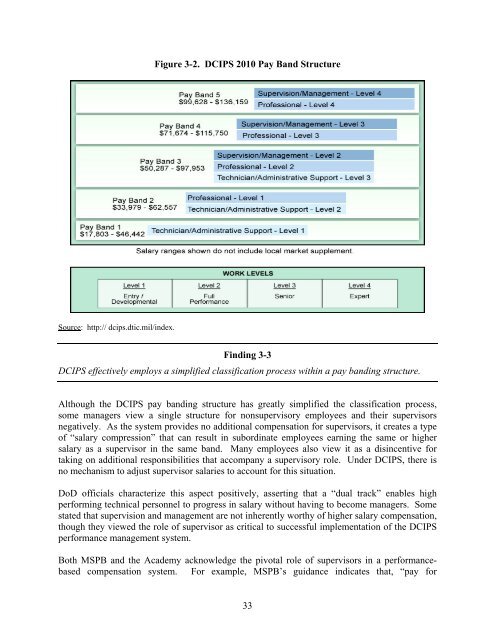Report - Government Executive
Report - Government Executive
Report - Government Executive
Create successful ePaper yourself
Turn your PDF publications into a flip-book with our unique Google optimized e-Paper software.
Figure 3-2. DCIPS 2010 Pay Band Structure<br />
Source: http:// dcips.dtic.mil/index.<br />
Finding 3-3<br />
DCIPS effectively employs a simplified classification process within a pay banding structure.<br />
Although the DCIPS pay banding structure has greatly simplified the classification process,<br />
some managers view a single structure for nonsupervisory employees and their supervisors<br />
negatively. As the system provides no additional compensation for supervisors, it creates a type<br />
of “salary compression” that can result in subordinate employees earning the same or higher<br />
salary as a supervisor in the same band. Many employees also view it as a disincentive for<br />
taking on additional responsibilities that accompany a supervisory role. Under DCIPS, there is<br />
no mechanism to adjust supervisor salaries to account for this situation.<br />
DoD officials characterize this aspect positively, asserting that a “dual track” enables high<br />
performing technical personnel to progress in salary without having to become managers. Some<br />
stated that supervision and management are not inherently worthy of higher salary compensation,<br />
though they viewed the role of supervisor as critical to successful implementation of the DCIPS<br />
performance management system.<br />
Both MSPB and the Academy acknowledge the pivotal role of supervisors in a performancebased<br />
compensation system. For example, MSPB’s guidance indicates that, “pay for<br />
33













